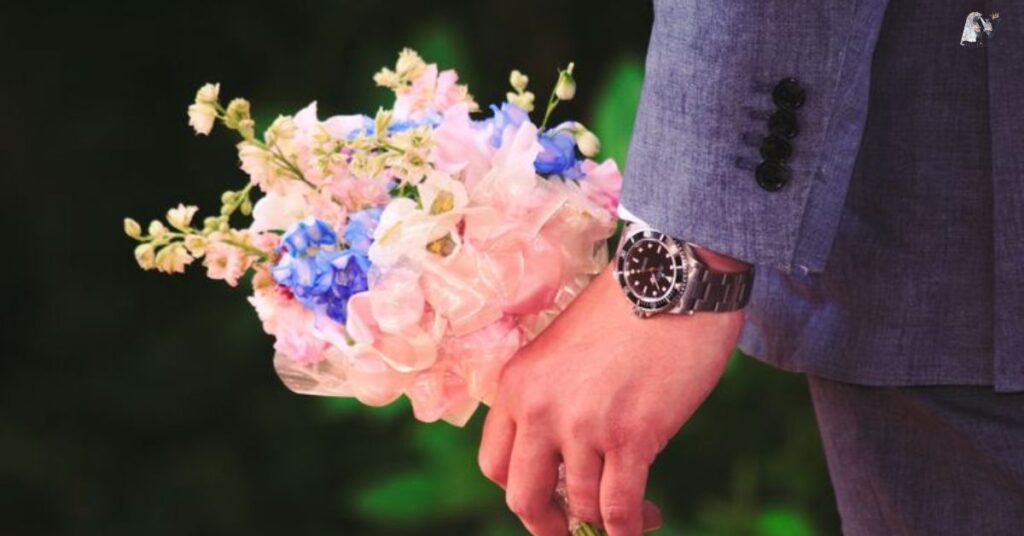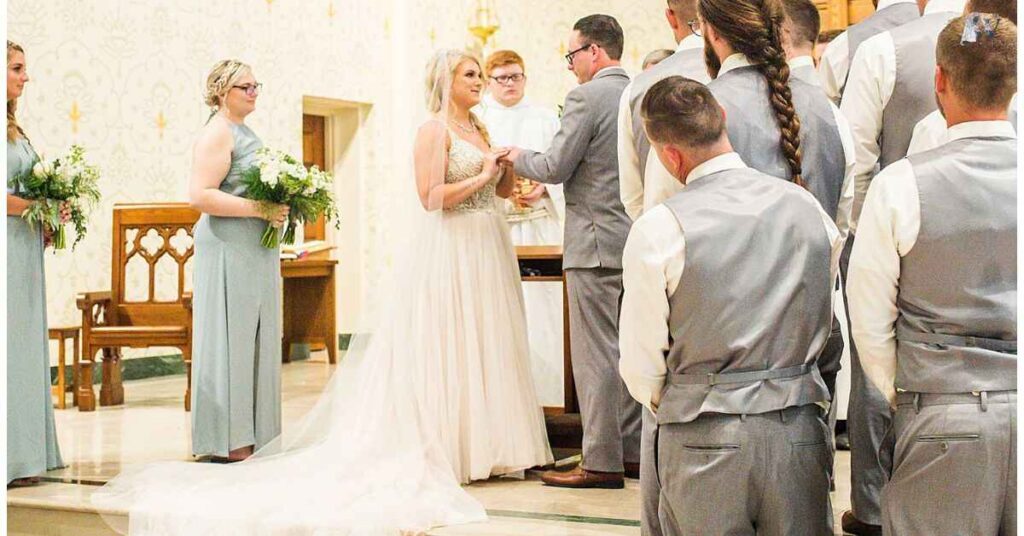Italian wedding traditions are rich in history and culture, showcasing a vibrant blend of customs and rituals. These traditions often reflect the values of family, love, and community, making Italian weddings truly unique and memorable.
From the symbolic meaning behind the bridal veil to the festive celebrations that follow, each tradition adds a special touch to the occasion. Exploring these customs can provide insight into the deep-rooted significance of love and commitment in Italian culture.
Before the Wedding Ceremony
Before the wedding ceremony, many couples participate in various pre-wedding rituals that symbolize their love and commitment. One common tradition is the engagement party, where families and friends come together to celebrate the couple’s upcoming union. In Italy, it is also customary for the bride to have a corteo or procession, where she is escorted to the ceremony by her loved ones, showcasing the importance of family support.
Couples often have a rehearsal dinner to finalize plans and enjoy a meal with their closest friends and family. This intimate gathering helps ease any nerves and fosters a sense of unity among everyone involved. As the big day approaches, the excitement builds, making the moments before the ceremony truly special.
Remove gold jewellery
Removing gold jewelry can be a straightforward process if done carefully. It’s essential to find a comfortable and well-lit space to avoid losing any pieces. Begin by gently twisting or sliding the rings off your fingers, ensuring not to pull too hard. For necklaces or bracelets, unclasp the fastening gently to prevent any damage.
If you encounter resistance, consider using a bit of soap or lotion to ease the removal process. Always store your gold jewelry in a soft pouch or box to prevent scratches and maintain its shine. Taking these precautions will help keep your gold jewelry looking beautiful for years to come.
No pre-wedding glimpses
No pre-wedding glimpses can create an air of mystery and anticipation for the big day. It allows couples to fully enjoy their special moments without the pressure of sharing them publicly. This choice can make the wedding reveal even more exciting for friends and family.
Embracing the Element of Surprise
Embracing the element of surprise can add excitement to our daily lives. Unexpected moments often lead to joyful experiences and new opportunities. By welcoming the unknown, we open ourselves up to growth and adventure.
The Benefits of Privacy Before the Big Day
Having privacy before the big day allows couples to connect and focus on each other without distractions. It creates a calm atmosphere for final preparations, reducing stress and fostering intimacy. Embracing this quiet time can enhance the overall wedding experience, making the day even more special.
Building Anticipation for Guests
Building anticipation for guests involves creating excitement and curiosity leading up to their arrival. This can be achieved through thoughtful communication, sneak peeks, and personal touches. A well-planned approach makes guests feel valued and eager to experience the event.
Fostering Genuine Moments Over Social Media
Fostering genuine moments over social media means prioritizing real connections and authentic experiences. Instead of curating perfect images, share candid moments that reflect true emotions and relationships. This approach encourages deeper interactions and strengthens bonds in a digital world often dominated by superficiality.
The groom buys flowers
The groom buys flowers to surprise his bride on their special day. He carefully selects blooms that reflect her favorite colors and style. This thoughtful gesture adds a personal touch to their wedding celebration.

- The groom chooses flowers that align with the wedding theme and color palette.
- He may consult with the florist to ensure the flowers are in season and available.
- Personalizing the bouquet with the bride’s favorite flowers or meaningful blooms adds sentimental value.
- The groom may include a special note or card to accompany the flowers as a sweet gesture.
- Timing is important; he should plan to purchase or order the flowers well in advance.
- Flowers can also be used for other wedding elements, such as boutonnieres for the groomsmen or decorative arrangements.
At the Wedding Ceremony
At the wedding ceremony, the atmosphere is filled with joy and anticipation. The couple stands before their loved ones, ready to embark on a new journey together. Each detail, from the floral arrangements to the music, contributes to the magic of the moment.
Family and friends witness this sacred union, sharing in the couple’s joy. Special rituals, such as lighting a unity candle or exchanging rings, further emphasize the significance of the day. The ceremony concludes with a celebratory kiss, marking the beginning of their life together as partners.
Also read this: Men’s Platinum Wedding Bands: The Ultimate Guide
No white dresses
No white dresses challenge traditional wedding norms, allowing couples to express their individuality. From vibrant colors to unique designs, these choices reflect personal style and cultural significance. Embracing diversity in wedding attire celebrates the uniqueness of each love story.
- Individual Expression: Couples opt for colors and styles that reflect their personalities and tastes.
- Cultural Significance: Many cultures have their own traditional wedding colors, often more vibrant than white.
- Breaking Tradition: Choosing non-white dresses can symbolize a departure from conventional wedding norms.
- Emotional Connection: Wearing a color that holds personal meaning can create a deeper emotional connection to the wedding day.
- Fashion Forward: Non-white dresses allow for creativity and innovation in bridal fashion, making a bold statement.
Tailor your veil
A tailored veil can be a stunning addition to any bridal ensemble, adding a personalized touch to your look. Choosing the right length, fabric, and style allows you to reflect your unique personality. Whether you prefer a classic cathedral veil or a modern birdcage style, custom options are abundant.
Working with a skilled designer ensures your veil complements your gown perfectly. You can incorporate intricate lace, delicate beading, or even a hint of color for a special flair. Tailoring your veil not only enhances your overall appearance but also creates a cherished keepsake for years to come.
Get Married on a Sunday
Getting married on a Sunday can be a charming and budget-friendly option for couples. Many venues offer discounted rates for Sunday weddings, making it easier to allocate funds for other aspects of the celebration. This day often provides a more relaxed atmosphere, allowing guests to unwind and enjoy the festivities without the usual weekday rush.

A Sunday wedding can encourage a more intimate gathering, as friends and family may prioritize attending. With the option to host brunch or lunch receptions, couples can create a unique culinary experience. Ultimately, tying the knot on a Sunday offers a delightful blend of savings and a special, laid-back vibe.
After the Ceremony
After the ceremony, the celebration truly begins, filled with joy and excitement. Guests gather to congratulate the newlyweds and share in the festivities. This is a time for heartfelt toasts, delicious food, and unforgettable memories.
Break a glass
Breaking a glass is a time-honored tradition in many cultures, symbolizing joy and prosperity. In Jewish weddings, this act is often performed to commemorate the destruction of the Temple in Jerusalem, reminding couples of life’s fragility. The sound of shattering glass fills the air with celebration, marking the couple’s new beginning together.
Rice rice baby
Rice Rice Baby is a playful twist on the famous song Ice Ice Baby by Vanilla Ice. This catchy phrase celebrates the versatility and cultural significance of rice in various cuisines around the world. It’s a fun reminder of how a simple grain can inspire creativity and bring people together through food.
Give sweet favours
Giving sweet favors is a lovely way to thank guests for sharing in your special day. These treats can be personalized, adding a unique touch that reflects the couple’s personality. From candies to homemade goodies, sweet favors leave lasting memories and a delightful taste.
Cut ties
Cut tie refers to the act of severing connections or relationships with someone or something. This phrase often signifies the need for personal growth, self-protection, or a fresh start. Whether it’s ending a toxic friendship, distancing from a negative influence, or leaving an unfulfilling job, cutting ties can be a liberating experience.
While it may be difficult to let go, prioritizing your well-being is essential. By cutting ties, you create space for new opportunities and healthier relationships. Embracing this change can lead to personal empowerment and a renewed sense of purpose. Ultimately, cutting ties can be a crucial step toward a more fulfilling life.
Monetary gifts
Monetary gifts have become a popular choice for many occasions, including weddings, birthdays, and graduations. They offer the recipient flexibility to use the money as they wish, whether for savings, purchases, or experiences. Unlike physical gifts, cash can eliminate the guesswork involved in choosing the perfect present.

The etiquette around monetary gifts can vary by culture and context. It’s essential to consider the recipient’s preferences and the occasion when giving cash. Thoughtful presentation, like a beautiful card or creative envelope, can enhance the gift’s sentiment, making it feel more personal and special.
First dance
The first dance is a cherished moment at weddings, symbolizing the couple’s love and unity. It often takes place immediately after the reception begins, drawing the attention of all the guests. Couples usually choose a song that holds special meaning for them, making the moment even more personal.
This dance allows the couple to showcase their connection and share an intimate experience in front of their loved ones. Many couples take dance lessons to prepare, adding an element of excitement and fun. Ultimately, the first dance sets the tone for the rest of the celebration, creating lasting memories for everyone involved.
Final words
Italian wedding traditions are steeped in rich symbolism and cultural significance, reflecting the values of family, love, and commitment. From the pre-wedding rituals, such as the engagement party and the bride’s preparation, to the ceremony and the lively reception, each tradition plays a vital role in weaving together the couple’s journey. The use of unique elements, such as the La Bolla a ceremonial bubble of rice that symbolizes prosperity and fertility, and the participation of family members in various customs, underscores the importance of community in Italian culture.
The celebration continues with festive traditions, including traditional music, dancing, and a sumptuous feast that highlights regional cuisine. As couples embrace these customs, they not only honor their heritage but also create a memorable experience for themselves and their guests. Ultimately, Italian wedding traditions remind us that love is a shared journey, best celebrated with the people who matter most.
Frequently asked questions
What is the significance of the wedding veil in Italian culture?
The wedding veil symbolizes modesty and purity. Traditionally, it is worn by the bride to protect her from evil spirits, and it is often accompanied by a floral crown or other adornments.
What role do family members play in Italian weddings?
Family is central to Italian weddings, with many customs involving the participation of relatives. For example, family members often help with wedding preparations, and their blessings are considered crucial for the couple’s happiness.
What are some common pre-wedding rituals in Italy?
Common pre-wedding rituals include the fidanzamento(engagement party), where families come together to celebrate the couple’s commitment. Another popular tradition is the battesimo (baptism), where the couple may seek blessings from a priest.
What traditional foods are served at Italian weddings?
Italian wedding feasts often include a variety of traditional dishes, such as pasta, risotto, and a selection of meats and seafood. Desserts like the wedding cake, often a multi-tiered creation, and regional sweets are also popular.
How do Italian couples choose their first dance song?
Italian couples typically choose a first dance song that holds special meaning for them, often reflecting their relationship or shared memories. It can be a romantic ballad or a lively traditional tune that sets the tone for the celebration.
